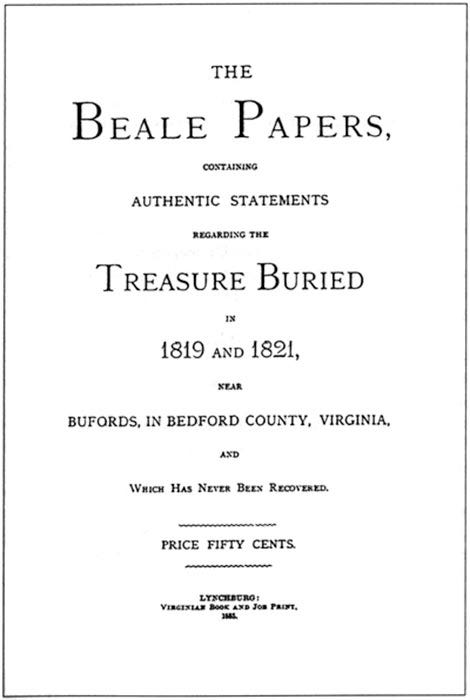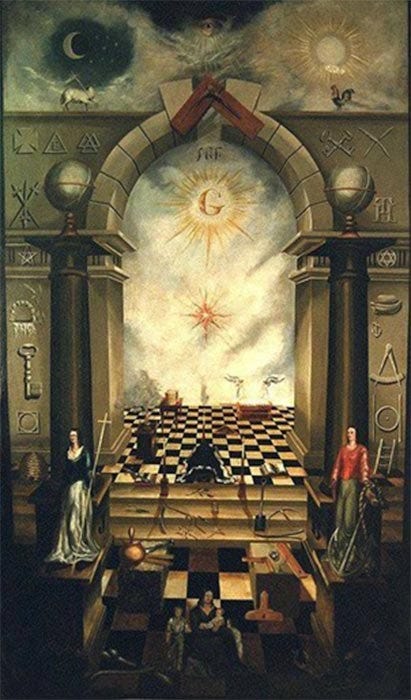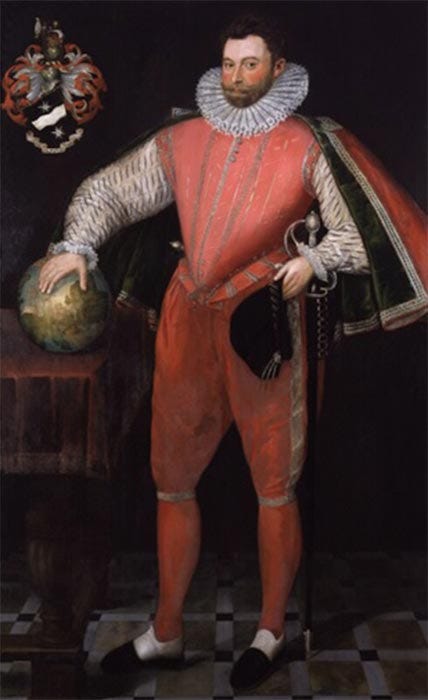Where X Marks The Spot
Rare Ancient Treasures, Codes and Cryptic Clues
Treasure legends sometimes have a kernel of truth, but are then exaggerated, embellished and transformed, told over and over again until the facts fade and leave only fantastical tales, but look hard enough and relics of the truth may rarely be found. This is the innermost belief of certain diehards who search for lost ancient treasures, decoding symbols, lines, codes and notes on maps, often scribbled in mysterious languages, while they dedicate their lifetimes to overcoming obstacles, obsessing about what might be the hidden “where X marks the spot”.

While fiction is awash with treasure maps, in real life, archaeologists and historians have only ever found a handful of texts, scrolls, carvings and maps that can be considered as probably authentic, and the following three examples are not without controversy, each one having its hardcore of believers and skeptics.
Following the Copper Scroll
In 1952 a team of archaeologists began excavating caves near Khirbet Qumran in the Dead Sea area near the Israeli settlement and kibbutz of Kalya, where they discovered the famous ‘Dead Sea Scrolls’, rolled up inside pottery jars. On March 14, 1952, the Copper Scroll was found in a wall of Cave 3. While it is considered as one of the Dead Sea Scrolls, this unique scroll was crafted on copper and tin in the Hebrew Mishnaic dialect language, dating to before the Bible. Finding such a rare scroll is the real deal when it comes to treasure hunting, but the scroll itself contains clues to the locations of 63 gold and silver treasures buried around the Holy Land.

Hundreds of experts have attempted to date the Copper Scroll, for example, on paleographical grounds, Dr F.M. Cross estimated it had been created between 25-75 AD, while W.F. Albright suggested 70–135 AD. What is more, scholars all have opinions as to the fate of the 63 treasure hoards mentioned in the scroll. Many believe at least some of the treasure would have been found by Romans or other looters. However, the academic community generally agree that the value of the accumulated hoards would be staggering if found, and it would certainly be considered one of the greatest archaeological treasure finds of all time.

In 2019 archaeologists announced that they are racing against grave robbers to find more ancient Dead Sea Scrolls. The treasures mentioned in the Copper Scroll total over 4,600 pieces of silver and gold with a value estimated at well over $1-billion (£770-million). However, the clues to where the treasures are hidden are written in such an obscure way that treasure hunters and academic researchers have had great difficulty in deciphering them. For example, one column reads: ‘In the salt pit that is under the steps: 41 talents of silver. In the cave of the old washer's chamber, on the third terrace: 65 ingots of gold.’

Can the Copper Scroll Treasure Be Found?
Can the Copper Scroll Treasure Be Found? The problem with the clues is twofold: the locations on the scroll are written so that the reader would require adequate knowledge of the region and places mentioned in the somewhat obscure references, and the directions do not have defined starting points which makes the clues virtually impossible to follow. These issues were learned the hard way when in 1962 archaeologist John Allegro embarked on an extensive treasure hunt and excavated several potential burial places that were listed on the scroll, but failed to recover any treasure whatsoever.
A more promising attempt at uncovering the treasures was launched in 2007 when scholar Jim Barfield used ‘triangulation techniques’ and claimed to have ‘found’ some of the locations in the area surrounding Qumran. According to a Breaking Israel News report at the time concerning Barfield’s investigation: ‘In one case the scroll described steps, 40 cubits long, heading east and Barfield did indeed find stairs conforming to the description. He also discovered the remains of a pool, precisely 40 cubits long, exactly where the scroll said it would be, however, lacking government permission, he could go no further.’ And, today, even if an Indiana Jones type super sleuth was to solve the scroll, and was 100 percent certain about the whereabouts of these treasures, the current political situation in the region where the scrolls were found makes it almost impossible to obtain the licenses needed for excavation work.

Beale Ciphers Decoded?
Moving from the archaeological sturdiness of the Copper Scroll to a treasure of a more questionable nature, in 1820, an American man named Thomas Jefferson Beale handed a wooden box containing three encoded ciphertexts to a local innkeeper, who subsequently passed the mysterious texts on to a ‘friend’ just before he died. This is the origin story of one of North America’s most enduring treasure tales which was taken to another level of intrigue after the ‘friend’ managed to decode one set of clues. In 1885 he published his revelations in a pamphlet, describing the contents of the treasure as $43-million worth of buried gold, silver and jewels buried at a secret location in Bedford County, Virginia.
Does Cryptic Code Hidden in Beale Ciphers Reveal Secrets of the Freemasons?
The extraordinary tale of a pope, a pirate, and a dead bishop’s treasure
The deciphered cryptogram reads: “I have deposited in the county of Bedford, about four miles from Buford's, in an excavation or vault, six feet below the surface of the ground, the following articles, belonging jointly to the parties whose names are given in number three, herewith: The first deposit consisted of ten hundred and fourteen pounds of gold, and thirty-eight hundred and twelve pounds of silver, deposited Nov. eighteen nineteen. The second was made Dec. eighteen twenty-one, and consisted of nineteen hundred and seven pounds of gold, and twelve hundred and eighty-eight of silver; also jewels, obtained in St. Louis in exchange for silver to save transportation, and valued at thirteen thousand dollars. The above is securely packed in iron pots, with iron covers. The vault is roughly lined with stone, and the vessels rest on solid stone, and are covered with others. Paper number one describes the exact locality of the vault, so that no difficulty will be had in finding it.”
The main reason scholars argue as to the authenticity of the Beale treasure is that the text presented above was decoded by the ‘friend’ of the Inn keeper who used an edition of the ‘United States Declaration of Independence’ as the key for a modified book cipher. With this key, he successfully deciphered the second ciphertext which gave him a description of the buried treasure. This might remind one of the plot of the 2004 movie National Treasure in which Nicholas Cage playing Benjamin Franklin Gates, a historian and amateur cryptologist searching for a lost treasure that was accumulated by American Freemasons during the American Revolutionary War, used a ‘coded map’ and he too found the key on the back of the Declaration of Independence, revealing the hidden location of the national treasure.

Treasure hunters, however, insist a secret vault containing buried treasure lies somewhere in Bedford County and many expeditions have set out, yet failed to find it. In Pennsylvania in the 1990s several digs were conducted at the top of Porter's Mountain with the landowner having settled on a 50/50 deal of any treasures found. While the treasure hunters did indeed recover valuable artifacts they mainly dated to the Civil War, the value of which compensated for the expeditions’ time and equipment rental. The last formal and publicized attempt at locating Beale’s vault of treasure was made in 2015 by Josh Gates in Discovery Channel’s series Expedition Unknown when they visited Bedford, investigating the Beale Ciphers and searching for the treasure.

The Beale Papers, tainted with a stigma of fiction, are often rejected outright by academics but some have taken the time to lay out their disputes. Among the most prominent skeptics is cryptographer Jim Gillogly, who in 1980 published an article titled A Dissenting Opinion, and in 1982 scholar Joe Nickell wrote Discovered: The secret of Beale's treasure. Both authors presented historical records which cast serious doubt on whether a Thomas J. Beale ever existed and Dr. Nickel presented linguistic evidence demonstrating that the documents ‘could not have been written at the time alleged’. His analysis of the writing style showed that Beale was most probably James B. Ward whose 1885 pamphlet originally brought the Beale Papers to the public arena. Dr. Nickell also argued that the whole story was specifically a secret vault allegory of the Freemasons, that mysterious fraternity of which James B. Ward was a member. The ‘vault’ was, in the ancient mysteries, symbolic of death and the grave, where alone in the dark, Divine Truth is to be found - spiritual gold.

Isla del Coco and The Treasure of Lima
Isla del Coco, or Cocos Island, is a designated National Park located in the Pacific Ocean about 342 miles (550 kilometers) off the coast of Costa Rica, with an area of approximately 9.212 square miles (23.85 square kilometers).

Not only is this island famous for hoarding the treasure of Benito of the Bloody Sword, Captain Cook and Sir Francis Drake, but modern treasure hunters like President Franklin Roosevelt obsessed over what is thought of as one of the largest lost treasures hoards ever buried - The Great Treasure of Lima.

Sir Frances Drake frequently landed on the island and rumors persist that he also buried a treasure hoard, around the same time the Great Treasure of Lima was said to have been taken to the island by descendants of Inca leaders and hidden somewhere on Mount Iglesias, the highest point on the island. Perhaps some of this loot was discovered after the author Reagen Smith proclaimed a British explorer had found an iron-bound chest that spilled out a hoard of Spanish gold coins, high in a cave overlooking Wafer Bay.

The legendary treasure of the Portuguese pirate Benito Bonito, or ‘Benito of the Bloody Sword’, has inspired over 300 formal treasure hunts on this island over the last two centuries. At the dock in Acapulco, Bonito and his men captured a Mexican mule train with over 300,000 pounds of silver bars, plate and coin which he said he buried in a sandstone cave in a mountain on the island. Historians have estimated the pirate’s hoard to be in excess of $1-billion in today’s currency, however, Bonito was executed and his legendary hoard has never been retrieved.
With so many legends and factual accounts of several major treasures having been buried on the island, in 1897 the Costa Rican government granted the German adventurer and treasure hunter August Gissler, the title of first ‘Governor of Cocos Island,‘ which allowed him to establish a colony. It is alleged that Gissler found some of the Great Treasure of Lima and according to the tales of a later German hermit, Heinz Hemmeter, who also lived on the island, Gissler found the Treasure of Lima at the bottom of a waterfall in a pool about 100 feet (30 meters) in circumference.

In 2011, the Costa Rican government issued another treasure recovery license to British treasure hunter, Mike Munroe, to carry out non-invasive operations. According to an article in The Telegraph, Munroe was after The Great Treasure of Lima Cathedral, which is known to include ‘two life-sized solid gold statues of the Blessed Virgin and Child and 273 jeweled swords and candlesticks,’ among thousands of precious stones and silver arts, which together are estimated to have been worth around $60 million at the time (around $2.5 billion today).
One of the most thrilling, accounts of the Treasure of Lima was given by Robert Charroux, a French author who founded the International Treasure-Seekers Club and published 'Treasures of the World' in 1962. Based on the account given in Charroux’s book some researchers have calculated the location of the treasure as ‘within 100 yards of: 5 degrees, 30 minutes, 17 seconds latitude north and 87 degrees, 0 minutes, 40 seconds longitude west, south of the Bay of Hope, north-northeast of Meule Island’. This location is currently in the sea just off the coast of the island, but it is thought that this indicates a cave that was accessible at low tide in the 16th-century.

Mel Fisher’s Perseverance
Dedicating a life to following a treasure map, it would seem, requires a hardy skeptical approach blended with having no fear whatsoever, about waking up one day to discover that a ‘goose chase' has just consumed many years of one’s life. But then again, there is Mel Fisher (August 21, 1922 - December 19, 1998), the American treasure hunter, known for losing his son and daughter-in-law when their boat capsized while treasure hunting in 1975, who went on to discover the 1622 wreck of the Nuestra Señora de Atocha.

Alone and broke, yet determined, Mel went to sea with his treasure maps, convinced he would one day find the legendary Spanish galleon. After a lifetime of searching and having lost all that he had once loved to his quest, on July 20, 1985, he discovered what is now known as The Atocha Motherlode. The treasure includes 40 tons of gold and silver; 114,000 Spanish silver coins and 60,000 gold coins, raw Colombian emeralds, 1,000 gold ingots and over 1,000 silver ingots, gold and silver indigenous artifacts, estimated to be worth $450 million. “Today is the day” finally dawned for Mel, who found X on the map.
Ashley Cowie is a Scottish historian, author and documentary filmmaker presenting original perspectives on historical problems, in accessible and exciting ways. His books, articles and television shows explore lost cultures and kingdoms, ancient crafts and artifacts, symbols and architecture, myths and legends telling thought-provoking stories which together offer insights into our shared social history. www.ashleycowie.com.
Top Image: Travel geography navigation concept background. (fotoatelie/ Adobe Stock)
By Ashley Cowie

